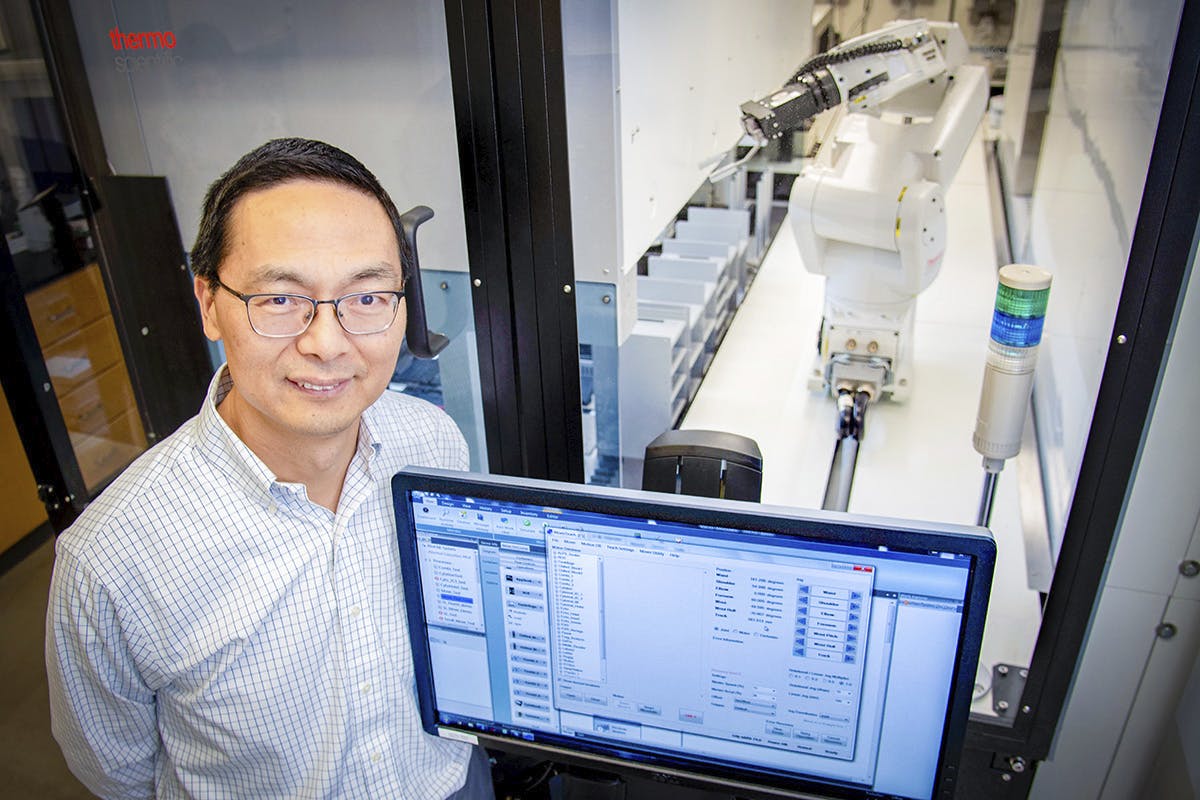NSF Funds 5 Centers to Expand Biotechnology Research
The agency sees biotechnology as one of five emerging industries for its applications in health and the environment.

The National Science Foundation is investing $75 million into creating five new biofoundries as part of its effort to support scientific discovery for the goods and services that would benefit the economy and society.
This bioeconomy, as well as the biotechnology that fuels it, is one of five industries the agency envisions as what it calls the industries of the future alongside advanced manufacturing, artificial intelligence, advanced wireless and quantum information science.
“The bioeconomy is a big part of the future for everyone in the U.S. because there are estimates that by the year 2030, the bioeconomy will contribute 1 million jobs to the U.S. economy,” said Susan Marqusee, assistant director for Biological Sciences and head of NSF’s Biological Sciences Directorate, at a recent agency briefing.
Biotechnology is the field of study around living organisms that lead to discoveries and developments like lifesaving vaccines and biodegradable plastics.
As a funding agency, NSF’s role in supporting the bioeconomy is by expanding education and training opportunities as well as supporting development of infrastructure for the industry, Marqusee added.
This is where NSF BioFoundries come into play. In general, a biofoundry provides automation and analytics infrastructure for engineering of biological systems. NSF BioFoundries located across academic institutions will each focus on a different area of biology or biotechnology.
Sridhar Raghavachari, program officer for NSF’s BIO Centers, Facilities, and Additional Research Infrastructure Cluster (CFARI) program, said the facilities will expand and democratize access to technology. The RNA BioFoundry at the University of Pennsylvania, for example, will provide researchers from anywhere in the country with end-to-end capabilities for their work.
The centers will also serve as proving grounds for ideas that are growing in national priority.
“The White House Executive Order on bioeconomy said not only do we need to scale at biomanufacturing capabilities, but we need to have standardization. BioFoundries provide a way to standardize some of the techniques, technologies, workflows and processes that can then be translated into an industrial scale,” said Raghavachari.
The New NSF BioFoundries
NSF BioFoundries will help train the workforce on skills in biology, computer science, AI and robotics. NSF granted the new awards to the following institutions:
- NSF Artificial Intelligence-driven RNA BioFoundry (NSF AIRFoundry): Led by the University of Pennsylvania and the University of Puerto Rico, it is focused on developing RNA molecules and delivery vehicles.
- NSF BioFoundry: Glycoscience Resources, Education, and Training (NSF BioF:GREAT): Led by the University of Georgia, this facility will focus on the study and development of technologies using proteins with sugar chains and the enzymes that make them.
- NSF iBioFoundry at the University of Illinois Urbana-Champaign (NSF iBioFoundry): This program will develop a remotely accessible, programmable, user-driven cloud facility that integrates synthetic biology, AI and machine learning, and laboratory automation.
- NSF BioFoundry for Extreme & Exceptional Fungi, Archaea and Bacteria (NSF Ex-FAB BioFoundry): Led by a consortium of University of California-Santa Barbara and Riverside and California Polytechnic State University-Pomona, it will focus on organisms that can live and thrive in extreme environments, with a particular focus on microorganisms that contribute to biotechnology development.
- NSF Center for Robust, Equitable and Accessible Technology and Education for Next Generation BioFoundries (NSF CREATE for Next Generation BioFoundries): Led by the University of Delaware, this project aims to develop the necessary automation and design tools for high throughput design and construction of metabolic pathways, protein materials, biosensors and bacteriophage products and will democratize access to the tools of modern biotechnology.
New NSF Directorate Tackles Biotechnology
The CHIPS Act funded NSF’s new Directorate for Technology, Innovation and Partnerships (TIP) launched in 2022 to develop a roadmap guiding investments in 10 key technology focus areas, one of which is biotechnology. Biotechnology has received the highest number of TIP funding awards so far totaling more than $530 million.
The new directorate is focused on advancing these technologies that would support U.S. competitiveness and grow the economy.
“We want to invest in graduate students to not only get into academia, but to start their own companies and then contribute to the bioeconomy by bringing their scientific findings and accelerate it into use-inspired applications,” said Waleed Nasser, the directorate’s program director for emerging technology.
TIP plans to award up to $40 million as part of its Use-Inspired Acceleration of Protein Design initiative to apply artificial intelligence and machine learning in protein design. This work would accelerate using protein design technologies beyond human therapeutics toward areas including biomanufacturing and climate-related challenges.
“We want to create a robust and independently supported protein design and characterization tools,” said Nasser. “We’re trying to develop new applications that benefit the bioeconomy and enhance biomanufacturing capabilities. We’re trying to increase adoption, create a virtual cycle of learning, investment and production, and we want it to be widely used by industry and academia.”
This is a carousel with manually rotating slides. Use Next and Previous buttons to navigate or jump to a slide with the slide dots
-

Trump's Intelligence Pick Backs Cybersecurity, Tech Accountability
The former congresswoman has called for improving cyber defenses and advocated for accountability in federal tech and data practices.
2m read -

Trump's Education Nominee Calls for Tech Vocational Programs
Linda McMahon has called for investments in the tech workforce and small businesses to remain competitive.
3m read -

DHS Leads Government’s Largest Civilian AI Hiring Effort
On this AI GovCast miniseries, Boyce discusses his journey to the agency with his prior roles at the Office of Management and Budget.
15m listen -

Storytelling Miniseries: Using Narratives to Nurture Relationships
In the final episode of our Storytelling Miniseries, we discuss building meaningful relationships through storytelling.
20m listen









